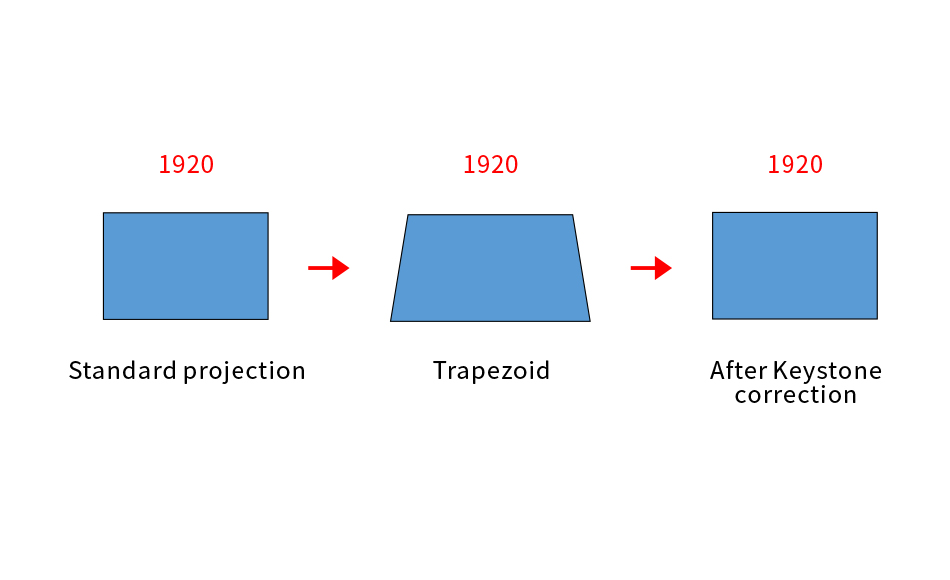No Products in the Cart
We will find the picture is trapezoidal during the time to use the smart projector.
which is requires us to use the keystone correction function to bring the picture back to normal. Although the smart projector has the keystone correction function in basically. But according to the survey shows a lot of people confused about What benefits does it bring us and when should we use it.

In other words. It is necessary to use every function when we use a smart projector.
When we use a smart projector. We must make alignment adjustments at first. The position of the smart projector must be as close to 90° as possible from the smart projector screen to ensure the projection effect. If not? The picture will be trapezoidal as shown in the figure of:

This is why we called 'keystone' correction. The original square image became trapezoidal due to the relative position of the smart projector and the screen. and It is divided into vertical and horizontal trapezoids according to different directions. In daily use, many people adopt the ceiling mount method. It is a common situation that the lens cannot be within the upper and lower edges of the curtain. Therefore, most smart projectors have a vertical keystone correction function.

Except in some special cases when keystone correction is required in the horizontal direction. It wouldn't normally happen otherwise. Vertical keystone correction is mostly in DLP machines, Japanese brands which use 3LCD technology can achieve horizontal keystone correction.
But Keystone degrades image quality. as it’s done by reducing the resolution. but I have never seen a side-by-side comparison or anything. I feel like any degradation would be negligible from 12 feet away.

Keystone correction is a method of providing a remedial image based on the user’s poor projection environment. However, it’s still important to follow the appropriate position for viewing.

As in the above picture, the deviation forms the focus plane and the projection plane is too large. Even if we made concessions in resolution and it is difficult to present a good image which only leads to a blurrier picture.
In review, although the keystone correction remedies the problem of incorrect placement of the smart projector, there are still various disadvantages, to ensure the best picture quality, the smart projector's lens is best centered and vertical to the projection screen. In the actual application process, when encountering uneven ground and desktops, we should firstly supplement the position of the smart projector with the projection screen or the wall as right as possible by supplementing it with footpads and stands. When not working, we use the keystone correction function.
Currently, there are two methods of keystone correction for smart projectors on the market: optical keystone correction and digital keystone correction.
First, optical trapezoid correction: by adjusting the physical position of the lens to achieve the purpose of adjusting the keystone, it also called shift axis, like the camera's shift axis lens, this correction method does not affect the physical pixels of the picture, and does not change the quality of the picture, The quality of optical keystone correction, which is suitable for applications that require higher image accuracy. General high-end home smart projectors and engineering smart projectors use optical keystone correction.
Second, the digital keystone correction: by software to achieve keystone correction. It uses software interpolation algorithms to scan the "line" or "field" of the display screen, and then adjusts and compensates according to the scanning amplitude to achieve the purpose of correction. Its correction range is more than ± 15 degrees, and it can do all-around processing of vertical, horizontal, and vertical keystone correction. The disadvantage of digital keystone correction is that the picture is compressed, which may bring about a decrease in picture quality.
After the image is corrected, some lines and character edges of the picture will appear burrs and unevenness, leading to a reduction in sharpness. So digital keystone correction is not very suitable for applications that require higher image accuracy.
What is size of lens